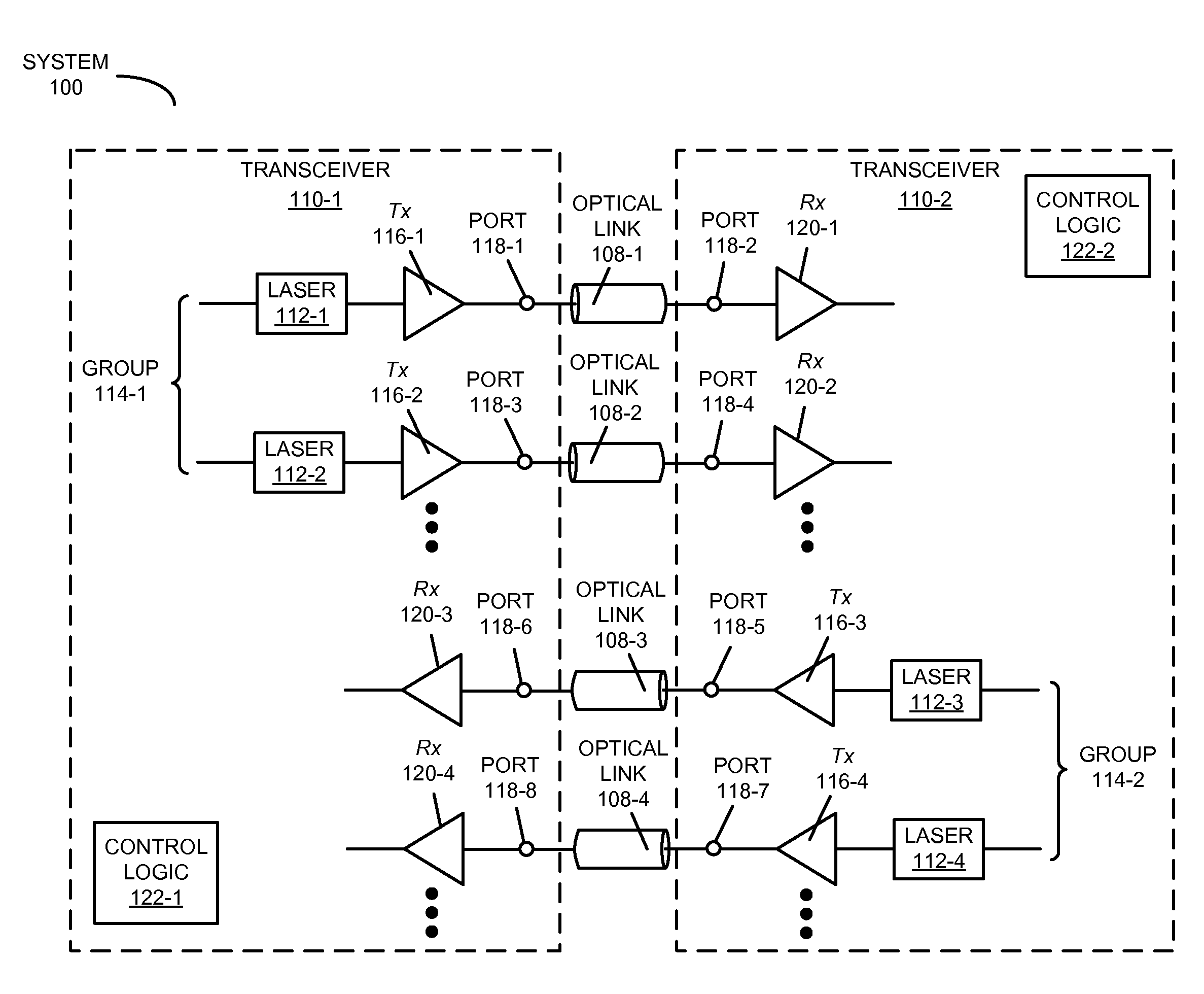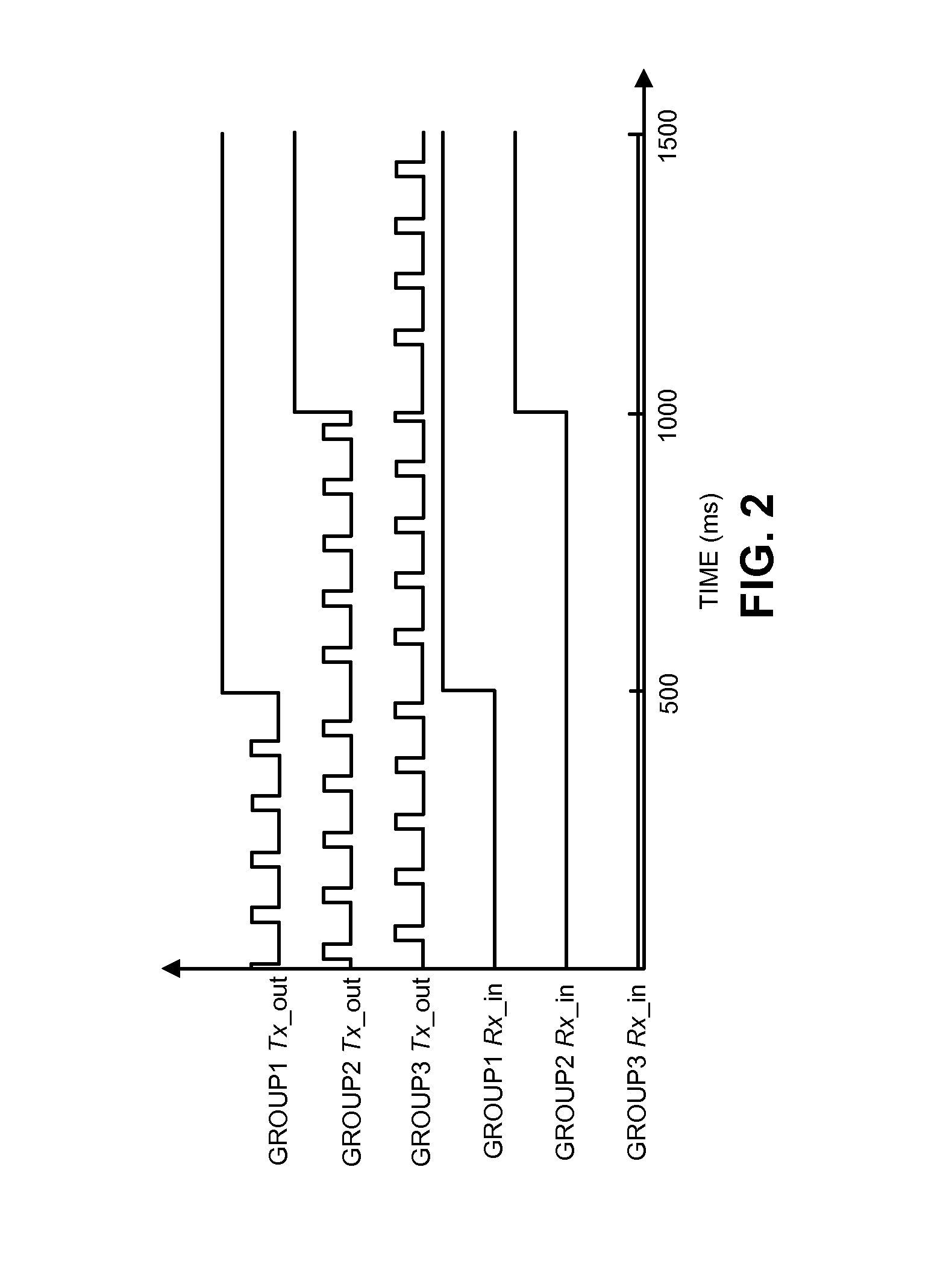Safety-enhanced laser array
- Summary
- Abstract
- Description
- Claims
- Application Information
AI Technical Summary
Benefits of technology
Problems solved by technology
Method used
Image
Examples
Embodiment Construction
[0026]Embodiments of a transceiver, a system that includes the transceiver, and a technique for ensuring Class 1 conditions for the transceiver are described. When an unsafe port with a loss of signal is detected, the transceiver may enable one laser in a group of lasers associated with the unsafe port and may disable the remaining lasers. Then, the transceiver may instruct a transmitter associated with the one laser to transmit an optical signal on the unsafe port using a reduced transmit power that is less than a threshold value associated with the Class 1 conditions and at a different time than enabled lasers in other groups of lasers. Alternatively, for a safe port on which valid communication is received, the transceiver may enable lasers in a group of lasers associated with the safe port. Then, the transceiver may instruct transmitters associated with the lasers in this group of lasers to transmit optical signals on the safe port using a normal transmit power for the lasers th...
PUM
 Login to View More
Login to View More Abstract
Description
Claims
Application Information
 Login to View More
Login to View More - R&D
- Intellectual Property
- Life Sciences
- Materials
- Tech Scout
- Unparalleled Data Quality
- Higher Quality Content
- 60% Fewer Hallucinations
Browse by: Latest US Patents, China's latest patents, Technical Efficacy Thesaurus, Application Domain, Technology Topic, Popular Technical Reports.
© 2025 PatSnap. All rights reserved.Legal|Privacy policy|Modern Slavery Act Transparency Statement|Sitemap|About US| Contact US: help@patsnap.com



